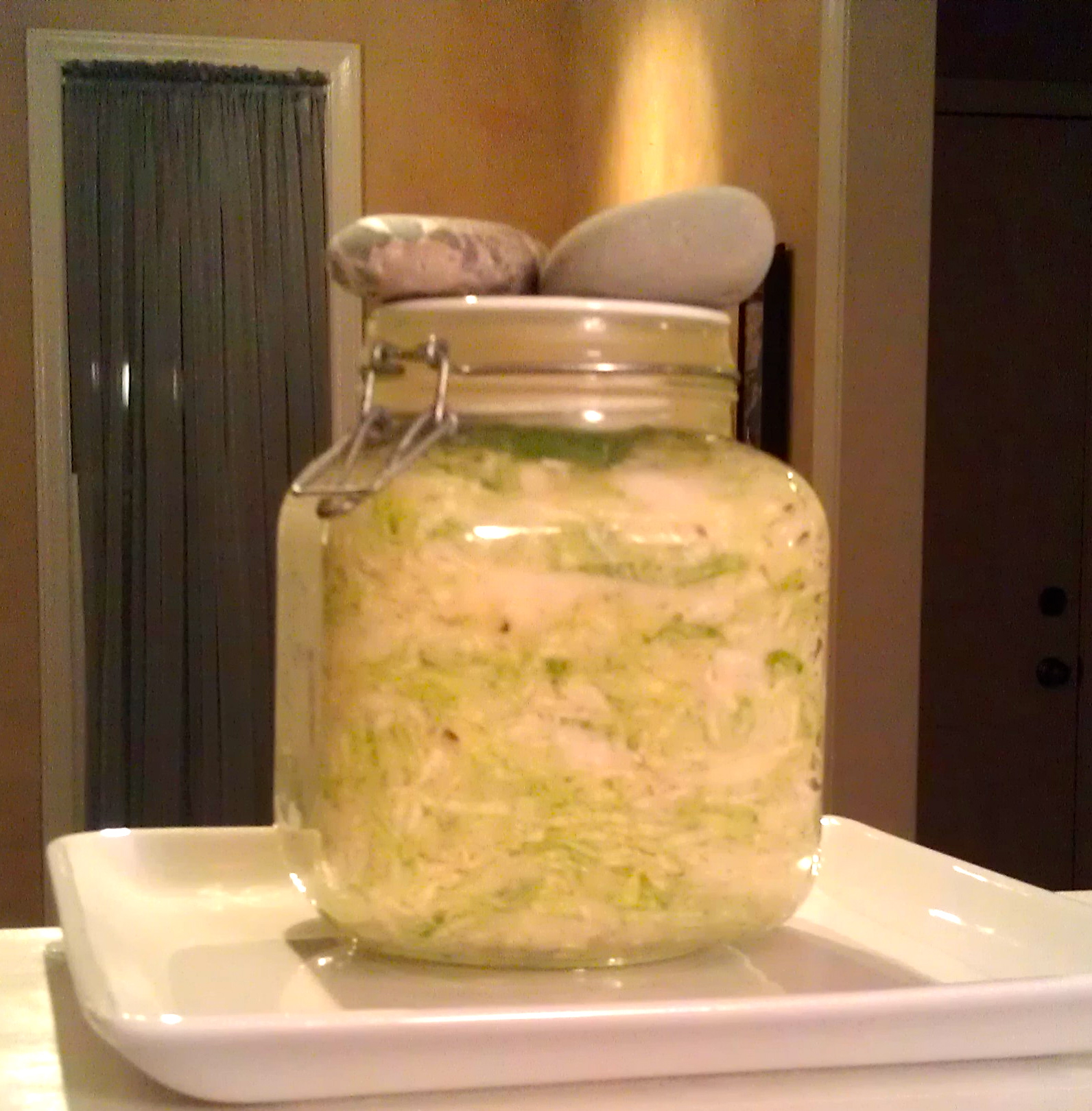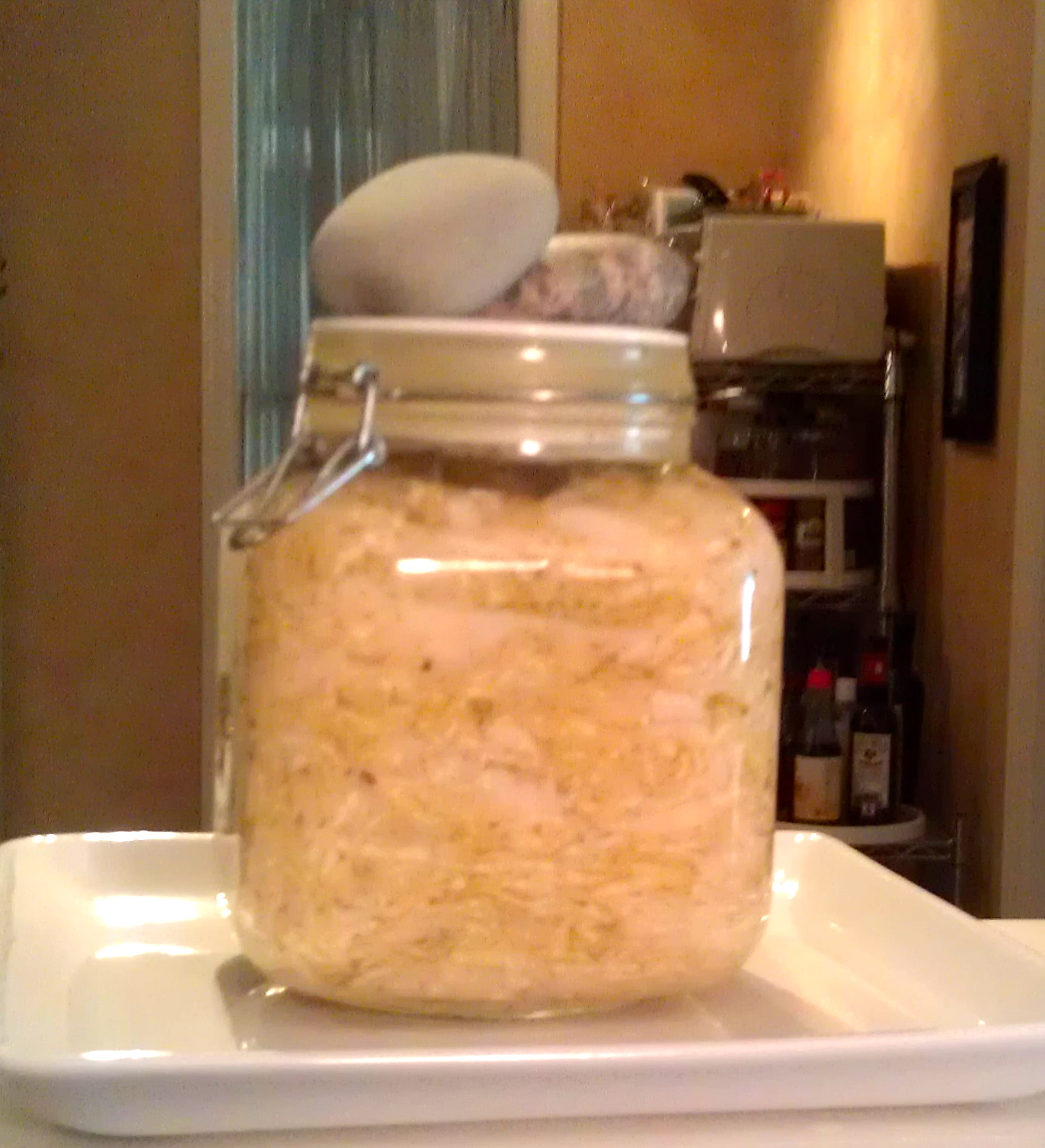Last spring, Master Food Volunteer and food preservation extraordinaire, Diane Blust, gave me the fermentation bug.
I was always awed and a little scared of home fermentation. After all, I’m a registered dietitian and incredibly—sometimes overly—mindful of food safety. The thought of eating food that’s been breeding bacteria at room temperature for days or weeks on end made me prohibitively nervous.
But many of my favorite flavors come from fermented foods: miso, tempeh, kimchi, hot sauce, and of course Virginia wines. Armed with my love of these delicious foods, I was determined to master the art! With Diane as my inspiration and Extension food preservation resources as my food-safety net, I’ve been fermenting non-stop for about a year.
When I saw a display of gorgeous, enormous, bright-green fresh cabbage on sale at my local grocer, I knew it was time for another batch of sauerkraut.
On the first day, the ferment was bright green.
The next morning, the healthful lactobacillus bacteria were noticeably hard at work. The cabbage was laced with pockets of carbon dioxide bubbles reaching for the surface.
Two weeks in, the bright-green colors changed to yellows and olive greens, which was great news. Green pigmentation in plants dulls and softens when exposed to acid. The beneficial bacteria were creating the desired lactic acid, which acts as a preservative and provides the tangy, vinegar-like taste in sauerkraut. This batch will be done in the next week or two.
How do you make your own sauerkraut? Follow the fermentation best practices from the University of Georgia Cooperative Extension’s National Center for Home Food Preservation.
For extra flavor, I added dried spices like caraway seed, dill, and garlic. Any of your favorite pickling spices will do. Diane’s signature ingredient, juniper berry, adds fantastic complexity. For more inspiration, check out The Art of Fermentation by Sandor Katz.
Want to learn more? Look for hands-on classes from Extension this summer.
–Katie Strong, MS, RD, FCS Extension Agent




Katie, I am inspired. Your sauerkraut looks wonderful! The possibilities are endless…..